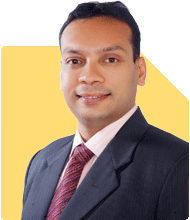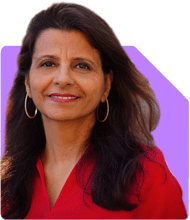Ramalingam Kalirajan |2776 Answers |Ask -Follow
Mutual Funds, Financial Planning Expert - Answered on Apr 30, 2024
He has an MBA in finance from the University of Madras and is a certified financial planner.
He is the director and chief financial planner at Holistic Investment, a Chennai-based firm that offers financial planning and wealth management advice.... more

Hello Hardik, Iam 40 Years and have started investing in SIP for the past 6 months.Below are my monthly investment 1. Parag Parikh Flexi Cap Regular Growth - 3500 2. Canara Robeco Small Cap Fund Growth - 3000 3. HDFC Retirement Savings Fund Equity Growth - 3000 4. NPS - 3500 I am planning for 18 Years of investment and aiming to slowly increase the SIP to achieve corpus of 2.5-3.0 Cr. Kindly review and advice. Regards, Ram
It's great to see that you've started investing systematically towards your long-term financial goals. Here's a review of your current SIP investments:
Parag Parikh Flexi Cap Regular Growth: This fund follows a diversified approach across various market caps and geographical regions, which can provide stability to your portfolio. It's suitable for long-term wealth creation.
Canara Robeco Small Cap Fund Growth: Small-cap funds can be volatile in the short term but have the potential to offer high returns over the long term. Ensure you're comfortable with the risk associated with small-cap investments.
HDFC Retirement Savings Fund Equity Growth: This fund is designed to provide wealth accumulation for retirement. It's aligned with your long-term investment horizon and retirement goal.
NPS: The National Pension System (NPS) is a retirement-focused investment option offering tax benefits. It's prudent to contribute to NPS alongside other investments for retirement planning.
To achieve your target corpus of 2.5-3.0 Cr over 18 years, consider periodically reviewing your SIP contributions and adjusting them based on changes in your income, expenses, and market conditions. Additionally, diversify across asset classes to manage risk effectively.
As your financial goals evolve, consider consulting with a Certified Financial Planner to ensure your investment strategy remains aligned with your objectives.
You may like to see similar questions and answers below
Ramalingam Kalirajan |2776 Answers |Ask -Follow
Mutual Funds, Financial Planning Expert - Answered on Apr 30, 2024
Ulhas Joshi |255 Answers |Ask -Follow
Mutual Fund Expert - Answered on May 16, 2023
Sanjeev Govila |458 Answers |Ask -Follow
Financial Planner - Answered on Feb 06, 2024
Ramalingam Kalirajan |2776 Answers |Ask -Follow
Mutual Funds, Financial Planning Expert - Answered on Apr 05, 2024
Ramalingam Kalirajan |2776 Answers |Ask -Follow
Mutual Funds, Financial Planning Expert - Answered on May 17, 2024
Ramalingam Kalirajan |2776 Answers |Ask -Follow
Mutual Funds, Financial Planning Expert - Answered on May 21, 2024
Ramalingam Kalirajan |2776 Answers |Ask -Follow
Mutual Funds, Financial Planning Expert - Answered on May 21, 2024
Ramalingam Kalirajan |2776 Answers |Ask -Follow
Mutual Funds, Financial Planning Expert - Answered on May 21, 2024
Ramalingam Kalirajan |2776 Answers |Ask -Follow
Mutual Funds, Financial Planning Expert - Answered on May 21, 2024
Ramalingam Kalirajan |2776 Answers |Ask -Follow
Mutual Funds, Financial Planning Expert - Answered on May 21, 2024
Ramalingam Kalirajan |2776 Answers |Ask -Follow
Mutual Funds, Financial Planning Expert - Answered on May 21, 2024
Krishna Kumar |287 Answers |Ask -Follow
Workplace Expert - Answered on May 21, 2024
Krishna Kumar |287 Answers |Ask -Follow
Workplace Expert - Answered on May 21, 2024
Komal Jethmalani |312 Answers |Ask -Follow
Dietician, Diabetes Expert - Answered on May 20, 2024
Patrick Dsouza |276 Answers |Ask -Follow
CAT, XAT, CMAT, CET Expert - Answered on May 20, 2024

























